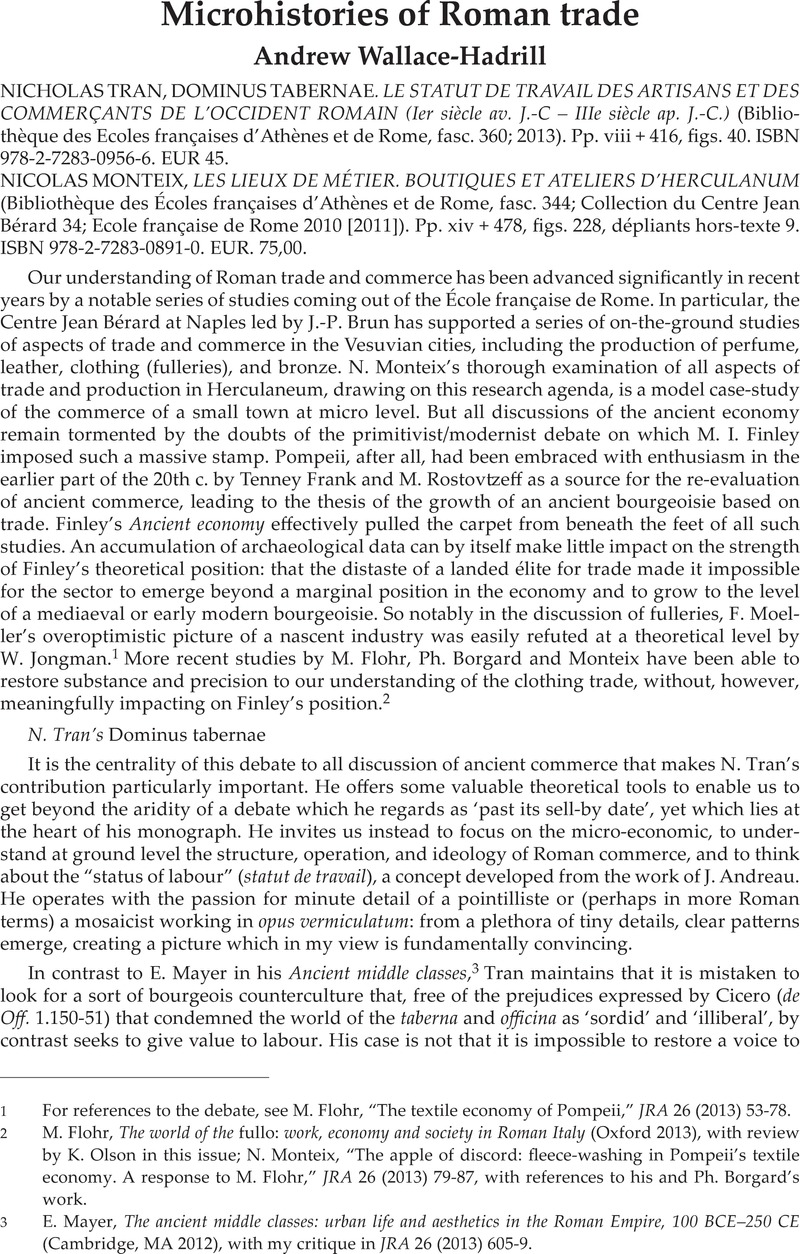Published online by Cambridge University Press: 27 November 2014

1 For references to the debate, see Flohr, M., “The textile economy of Pompeii,” JRA 26 (2013) 53–78 Google Scholar.
2 Flohr, M., The world of the fullo: work, economy and society in Roman Italy (Oxford 2013)CrossRefGoogle Scholar, with review by K. Olson in this issue; Monteix, N., “The apple of discord: fleece-washing in Pompeii’s textile economy. A response to M. Flohr,” JRA 26 (2013) 79–87 Google Scholar, with references to his and Ph. Borgard’s work.
3 Mayer, E., The ancient middle classes: urban life and aesthetics in the Roman Empire, 100 BCE–250 CE (Cambridge, MA 2012)CrossRefGoogle Scholar, with my critique in JRA 26 (2013) 605–9Google Scholar.
4 Holleran, C., Shopping in ancient Rome: the retail trade in the Late Republic and the Principate (Oxford 2012)CrossRefGoogle Scholar, with review by Papi, E. at JRA 26 (2013) 561–64Google Scholar.
5 See nn. 1-2 above.
6 S. Ellis, J. R., “The shops and workshops of Herculaneum,” JRA 26 (2013) 601–4Google Scholar.
7 E.g., Allison, P., Pompeian households: an analysis of the material culture (Los Angeles, CA 2004)CrossRefGoogle Scholar, with review by Flohr, M. at JRA 18 (2005) 587–90Google Scholar.
8 Allison ibid. 112, cited by Monteix at 41.
9 Monteix, N., “Fouilles de l’atelier de métallurgie du plomb (VI,12) et de la boutique VI,15 en façade de la Casa del salone nero à Herculanum,” RStPomp 16 (2005) 262–74Google Scholar.
10 A conclusion anticipated by Guidobaldi, M. P., “La bottega di un gemmarius (Ins. Or. II, 10) e l’ingannevole ‘stanza della ricamatrice’,” in D’Ambrosio, A., Guzzo, P. G. and Mastroroberto, M. (edd.), Storie da un’eruzione. Pompei, Ercolano, Oplontis (Milan 2003) 102–11Google Scholar, acknowledging Monteix's work.
11 Maiuri, A., Ercolano (Itinerari dei Musei e Monumenti d’Italia; 2nd edn., Rome 1937) 59 Google Scholar: “oggetti vari rinvenuti nelle stanze del pianterreno e del piano superiore”.